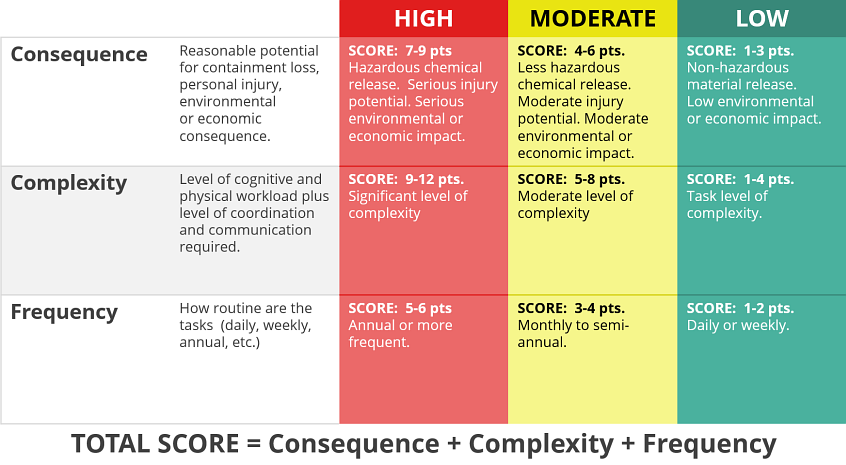Procedure Risk and Use Assessment
After an assessment is completed, one of the foundational components of a procedure program methodology includes the risk-based classification as one of the 3 following types based on frequency of use, consequence and task complexity.
The Risk Classification is important as it determines how the procedures are used, the format, and frequency of review and training. Some organizations treat all procedures identically, resulting in increased workload related to low-risk procedures while increasing use and adherence excursions for higher risk procedures.
Procedure Risk Classification
The standard risk-based levels, as defined by the Abnormal Situation Management Consortium are:

After a procedure is risk-assessed and the points are totaled, then the table below indicates the standard procedure use.
| Points | Procedure Type | Description |
|---|---|---|
|
>17 |
Critical use |
|
|
>10-17 |
Reference use |
|
|
>6-9 |
Guidelines use |
|
|
><6 |
Training |
|
How SmartProcedures Helps
With SmartProcedures, the Risk score and other risk factors become an important element in the procedure lifecycle in the following areas:
- Capture risk assessment data and findings as part of Procedure review process
- Store risk levels as procedure metadata
- Determine appropriate templates to use with procedure based on risk
- Determine training frequency
- Determine sign-off requirements and event data records
Source: A Study of Effective Procedural Practices in Refining
and Chemical Operations, Bullermer, Hajdukiewicz.
View - pdf (38 kb)
Other Products
Discover innovative tools to get work done that solve common challenges faced by industries.
